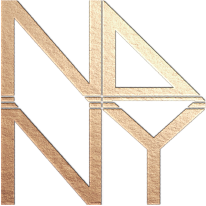Incorporating Archetypes for brands
Incorporating brand archetypes into a business brand strategy can significantly impact the brand's success. By identifying the brand's archetype, the brand can create a consistent image and message that resonates with its target audience. This helps to build trust and loyalty with customers, as they can better understand and connect with the brand's personality and values. For example, a brand with a Caregiver archetype may focus on providing excellent customer service and being a reliable source of support for its customers.
Discover Each of the Archetypes: Creator | Ruler | Caregiver | Lover | Everyman | Hero | Jester | Magician | Outlaw | Innocent | Sage | Explorer
Once the brand's archetype or types are identified, it can be incorporated into all aspects of the brand strategy. This includes visual elements such as the brand's logo, color scheme, website design, the brand's messaging, and tone of voice in all communications. For example, a brand with an Explorer archetype may use adventurous and inspiring language in its marketing materials and social media posts. Consistency in branding is crucial in creating a solid brand identity that is easily recognizable and memorable to customers.
One can stand out in a crowded market by incorporating brand archetypes into a business strategy. By identifying and utilizing a unique archetype, the brand can differentiate itself from competitors and create a niche for itself in the market. For example, a brand with a Jester archetype may use humor and wit in its marketing materials, which can be a refreshing change from more serious and straightforward marketing approaches. Incorporating brand archetypes into a business strategy can help the brand create a solid and memorable identity that resonates with its target audience and sets it apart from competitors.
The History of Archetypes
Carl Jung, the renowned Swiss psychiatrist and psychoanalyst, introduced the concept of archetypes in psychology in the early 20th century. Archetypes refer to the universally recognized patterns, symbols, and images present in the collective unconscious of humanity. Jung identified twelve archetypes that he believed were present in every individual, including the Creator, Ruler, Caregiver, Lover, Everyman, Hero, Jester, Magician, Outlaw, Innocent, Sage, and Explorer. According to Jung, these archetypes are rooted in ancient myths and stories and represent the fundamental aspects of human nature.
Jung's approach to brand archetypes suggests companies can tap into these universal patterns and symbols to create powerful and resonant branding strategies. By aligning their brand with a particular archetype, companies can develop a sense of identity and meaning that resonates with their target audience. For example, a company that aligns itself with the Hero archetype might create ads focusing on overcoming adversity or achieving greatness. In contrast, a company aligning with the Sage archetype might create ads emphasizing knowledge and wisdom.
The concept of archetypes has a long history that stretches back to ancient Greece and beyond. The Greek philosopher Plato believed that ideal forms existed beyond the physical world and that these forms were reflected in the physical world as archetypes. Modern archetypes have been used in various fields, from literature to marketing. Today, using archetypes in branding has become increasingly popular as companies seek to create more meaningful and resonant connections with their target audience.
Discover Each of the Archetypes:
Creator | Ruler | Caregiver | Lover | Everyman | Hero | Jester | Magician | Outlaw | Innocent | Sage | Explorer



